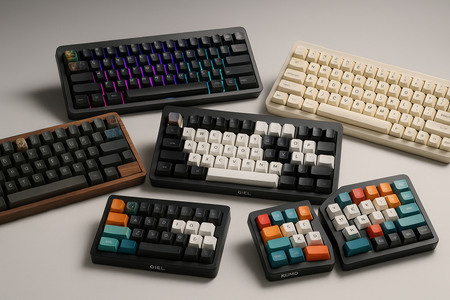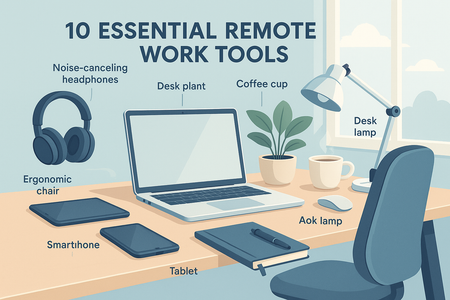In 2025, writing code isn’t just about the IDE—it’s about the infrastructure. With AI pair programming, real-time autocomplete, and large model integrations now part of the daily dev workflow, more programmers are upgrading their setups to match the horsepower that AI-enhanced coding actually requires.We’re entering the era of the AI-optimized workstation—where developers combine software like GitHub Copilot, Codeium, and Cursor with GPUs, fast SSDs, and memory-heavy machines to keep things snappy, secure, and future-proof.Let’s break down why devs are making the switch, what hardware stacks are trending, and how a smart setup in 2025 delivers more than just speed—it unlocks smoother flow, deeper focus, and better builds.
1. The Rise of Code-Native AI Means You Need More Than Just a Browser
Why It’s a Game-Changer
The average AI coding assistant is now running background inference, real-time context mapping, and model interaction—all in your IDE. That demands far more from your local machine than a few browser tabs ever did.
What’s Changing
- AI Autocomplete is always-on
- LLM-powered search + refactor tools use RAM-heavy local caching
- IDE-native chat (like Cursor or Cody) continuously references file systems
- GPU-accelerated LLMs are entering local dev workflows for privacy reasons
Practical Impact for Devs
The faster your machine, the less delay between input and insight. That matters when you’re iterating rapidly or swapping between microservices, docker containers, and test suites.External Source: PCMag’s 2025 Dev Hardware Trends reported that 60% of devs upgrading their machines in 2024 cited “AI tooling lag” as their main reason.
2. Recommended Hardware for an AI-Ready Dev Machine
Why It’s a Game-Changer
You don’t need a deep learning rig to build websites—but a responsive, AI-friendly machine ensures Copilot doesn’t lag, Docker doesn’t choke, and VS Code stays smooth under pressure.
Optimal Setup Specs (as of 2025):
- CPU: Intel i9 or AMD Ryzen 9 (multi-threaded for model support)
- RAM: 32GB minimum for simultaneous builds + inference + browser tabs
- GPU: NVIDIA RTX 40-series or Apple M3 Pro (for AI model support & rendering)
- Storage: 1TB+ NVMe SSD for fast file indexing and AI asset caching
- Display: 32" 4K or dual-screen setup for multi-repo work
Practical Benefits for Devs
No fan noise when tabbing to Copilot. No IDE lockups when training a small local model. No waiting 30 seconds for a refactor command to resolve. Your stack stays fast, focused, and fluid.
3. Local LLMs and On-Device AI: The Privacy + Performance Shift
Why It’s a Game-Changer
With tools like Tabnine, PrivateGPT, and Ollama entering dev stacks, many teams are opting to run local AI models for security, speed, and cost savings.
What It Enables
- Offline autocomplete and generation
- Private refactors, summaries, and QA
- Custom-trained code models per org
- No outbound API calls or telemetry
External Source: TechCrunch noted that enterprise dev teams in finance and healthcare now prioritize machines that support on-device LLMs.
4. Workstations That Power Your Stack + Studio
Why It’s a Game-Changer
Modern devs aren’t just writing code—they’re building landing pages, recording walkthroughs, editing content, and collaborating on design. AI-powered hardware bridges code with creative.
Trending Additions to the AI Dev Desk
- Smart Mic + Noise Filtering Tools for remote calls or screencasts
- AI Cameras for Pair Programming
- AI-Enhanced Displays with Blue Light Shifting
- On-Desk Automation Tools (like Elgato Stream Deck or keyboard macros)
Practical Benefits
You can code, record, and ship a project launch page without skipping a beat—or switching machines. AI optimizations enhance not just output, but how you feel while shipping it.Internal Link: For complementary hardware, check out The New Coding Stack: 5 AI Tools Devs Will Use in 2025 to see how these tools pair with the ideal machine.
5. Developers Are Now Thinking Like Creators
Why It’s a Game-Changer
AI isn’t just a dev tool—it’s a creative one. Whether you're generating docs, onboarding walkthroughs, or UX flows, developers in 2025 are blending technical and creative workflows in one optimized system.
What This Means
- Fewer cloud hops
- Tighter feedback loops
- Better collaboration with design/product
- Smarter, more flexible workflows—all on one desk
Code Faster, Debug Smarter, Scale Locally
The AI-optimized workstation isn’t about raw power—it’s about removing friction.From code generation to local testing to real-time collaboration, AI tooling has made development more fluid—but also more demanding. That’s why developers in 2025 are investing in machines that can keep up—not just with the tools, but with their own momentum.Pair a powerful setup with the right co-pilot stack, and you’ll code faster, think clearer, and iterate like never before.






0 comments